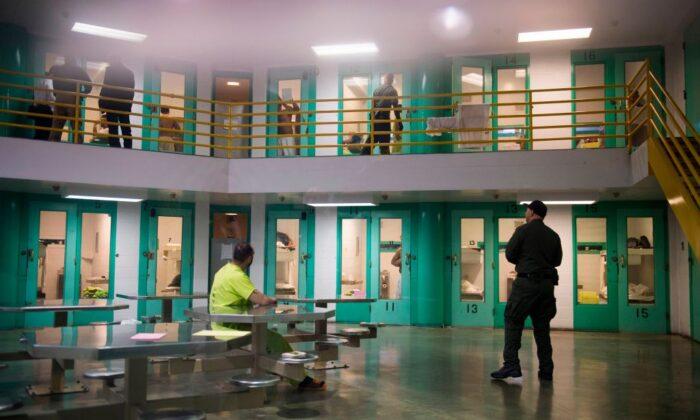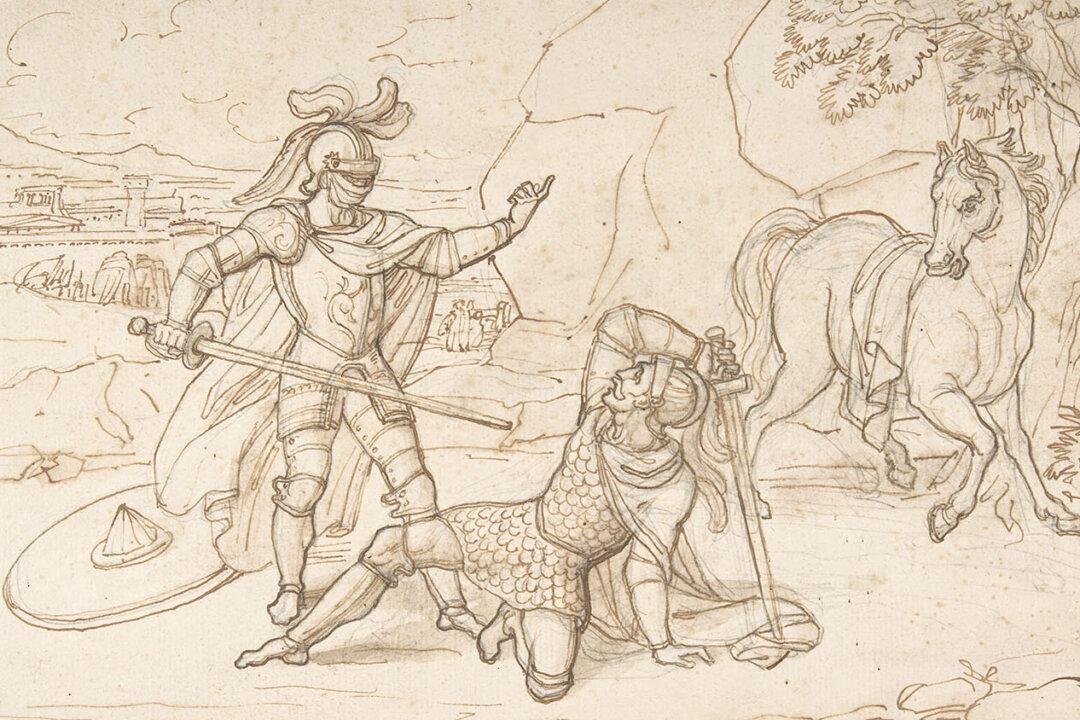Mike came into the classroom, African-American, mid-30s and built like a guy who had played tackle on his high school football team. He kept eyeing me as I helped the other students. Finally, he raised his hand and asked me, “Where are you from?”
“Waynesville.” It was the county seat, about five miles away.
“But where in Waynesville?”
“I own the bed and breakfast on Pigeon Street.”
He laughed. “Man, I used to live in the stone house across the street.”
I smiled back. “I thought you looked familiar.”
“I robbed some houses on that street,” he said. “But I never hit yours.”
“Thank you, Mike,” I told him.
My Time in Prison
In the early 1990s, I taught Adult Basic Education at a minimum-security prison in Hazelwood, North Carolina. About a dozen prisoners met with me in a trailer behind their barracks on Monday and Tuesday evenings, where I would teach them math and reading, and they would teach me lessons gained from lives beyond my experience.These men ranged from illiterates to those working toward a high school diploma via the GED. Mike was a member of the latter group, and eventually he did earn his diploma. Several years later, I ran into him and his family in the parking lot of a convenience store, where he told me he was now working as a welder and making good money. He had made a success of himself.
Bill was not so lucky.
He was in his 60s, wild-haired, grizzled, with a crazed glint in his eye, and came to classes only to get out of the barracks. Several times, to me or to the other prisoners, he made threats against his wife for reasons I never discerned. A week after his release, the police shot Bill dead in a chicken coop behind his wife’s house.
Conversations With Eric
Eric and I became acquainted. He was a drug dealer from Charlotte, rumored to have killed a man. Once when I was helping him with percentages, his face suddenly lit up. “I used to do this stuff all the time on the street.”“Well, good for you,” I said. “What did you do?”
“I dealt drugs,” he said, as casually as someone else might say “I teach English literature.”
Eric told me that while he was in jail awaiting trial, his mother—all these prisoners had a deep reverence for motherhood—visited him. “Son, son,” she said, “I can’t believe you were selling drugs.”
“Mom,” Eric said, “I bought you a nice house and a boat for myself, and I wasn’t working. Where did you think the money was coming from?”
Falling Down
Not all of these men were as bright as Mike and Eric. There was a boy of about 20, for instance, a skinny kid missing some teeth, who was imprisoned for child molestation and who spent most of his time in the classroom drawing trucks. Given his limited mental capacities and emotional state, society might have better served Steve by placing him in a mental institution.William took the GED twice, failed miserably, and asked me what was wrong with him. Though I encouraged him to keep trying, I lacked the heart to tell him he lacked the mental skills to pass the test.
Morris had murdered his wife after he’d found her in bed with another man. He was the quietest of all the prisoners, and yes, I know this sounds weird, but he had a shy, gentle way about him and was quite likeable.
Here are some general impressions these men left on me.
The Usual Suspects
Most of the inmates were Caucasian. Hazelwood is in the Smoky Mountains, and mountains were not conducive to plantations and slaves. The state made an effort to place prisoners near their homes, hence the large number of whites versus African-Americans.The majority of the inmates were there for drug-related offenses, either for dealing or possession.
And of the inmates who lacked even a basic education, almost to a man they told me they had liked school until third grade. Third grade with its greater demands in math—multiplication, division—reading, and writing had brought their schooling to a standstill.
As far as I could tell, all of these men came from impoverished homes, and few of them had any skills in the trades.
Many of them, particularly the younger ones, spoke fondly of their mothers, but none of them ever mentioned their fathers.
The Bigger Picture
The United States has the largest number of prisoners in the world. At Prison Policy Initiative, Wendy Sawyer and Peter Wagner report that 2.3 million Americans are imprisoned in various facilities throughout the United States. The statistics they cite offer some surprises, such as the fact that over 500,000 men and women occupy jail cells at any given time because they are too poor to make bail.The good news is that incarceration rates, like crime rates, are falling in our country. Recently passed into law by our Congress and president, the First Step Act may help reduce these numbers even further and provide some training programs and other assistance to those leaving prison.
Such programs will help, but in the long run, fixing our failed schools and our broken families and reviving moral principles in our people will matter most. A man raised in poverty without a male model to emulate who can barely read and who has never learned a trade has little chance for success in this world. Forty percent of babies today are born outside of wedlock, and an article in U.S. News & World Report tells us that the 2019 National Assessment Education Project found that reading and math scores, never all that high, again fell this year.
The resurrection of the traditional family, improving our schools, and teaching virtue in any number of forums are the best antidotes against incarceration.
The Hazelwood prison is closed now, and the inmates I taught there are now 30 years older, or dead. But they live on in my memory, and I hope some of them, like Mike, left that place, became better men, caught a break, and made their way in the world.
Jeff Minick has four children and a growing platoon of grandchildren. For 20 years, he taught history, literature, and Latin to seminars of homeschooling students in Asheville, N.C., Today, he lives and writes in Front Royal, Va. See JeffMinick.com to follow his blog.







Friends Read Free